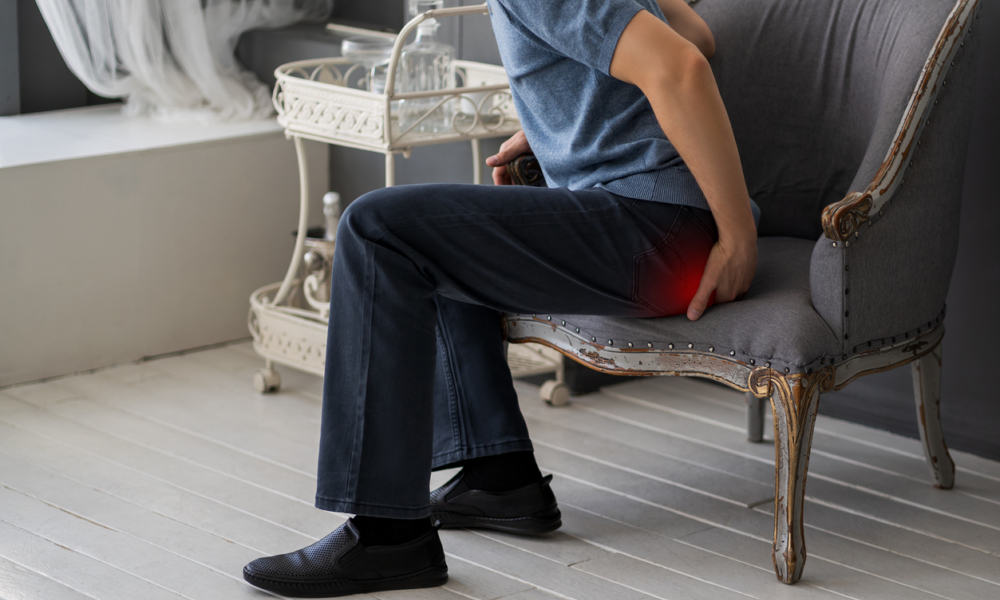
What you need to know about Rectal Prolapse
Are you experiencing pain, bleeding, or discomfort around your rear end? If so, it could be a sign of rectal prolapse. Don't worry – rectal prolapse isn't unheard-of and with the right treatment plan from your doctor it can usually be managed successfully!
What is Rectal Prolapse and What are Its Symptoms
This medical condition is most common in older adults, especially women. While there is no single cause for rectal prolapse, there are several factors that can increase the likelihood of developing the condition. These may include weakened muscles in the pelvic area, chronic constipation, diarrhea, advanced age, a history of pelvic surgery, and prolonged straining during bowel movements.
Rectal prolapse occurs when the rectum, the last part of the large intestine, falls down or protrudes outside the anus. Symptoms of rectal prolapse include a feeling of pressure or discomfort in the anus, bowel incontinence, and the presence of a bulge or mass in the rectum.
If you are experiencing any of these symptoms, it is important to seek medical attention immediately as rectal prolapse can lead to serious complications such as anal fistulas or rectal bleeding.
How is Rectal Prolapse Diagnosed and Treated
If you have been experiencing symptoms such as bleeding, pain or discomfort during bowel movements, or a protruding lump near your anus, it is important to consult with a healthcare professional as soon as possible. A doctor or specialist may conduct a physical examination, ask about your medical history and may recommend additional tests such as a colonoscopy or imaging tests to confirm the diagnosis.
Treatment options may vary depending on the severity of the prolapse, but usually involves surgery, stool softeners, fiber-rich diets or pelvic floor exercises. Seeking timely diagnosis and treatment can greatly improve the prognosis for those with rectal prolapse and alleviate any discomfort and inconvenience caused by this condition.
Managing the Condition with Your Diet and Exercise Routine
Managing this condition with a proper diet and exercise routine can alleviate symptoms and even prevent the prolapse from occurring in the first place. Maintaining a healthy weight and including fiber-rich foods in your diet can help regulate bowel movements and prevent constipation, one of the underlying causes of rectal prolapse.
Additionally, pelvic floor exercises and other low-impact physical activities can strengthen the muscles and ligaments in the pelvic area and prevent prolapse from worsening.
Because rectal prolapse is more of a physical discomfort, we can sometimes overlook the emotional stress this condition can cause. The protrusion of the rectum through the anus can lead to feelings of embarrassment, shame, and anxiety. Individuals experiencing rectal prolapse may feel too embarrassed to seek treatment, further exacerbating their emotional distress. The condition can also cause physical discomfort, pain, and decreased quality of life.
Understanding the Different Types of Surgery Used in Treating Rectal Prolapse
Fortunately, advances in medical technology and techniques have created several options for rectal prolapse treatment. Understanding the different types of surgery used in treating rectal prolapse is crucial for making informed decisions. These options include abdominal and perineal approaches, with variations in each method.
While each procedure may have its own risks and benefits, the ultimate goal is to alleviate discomfort and provide a better quality of life for those affected by rectal prolapse. As healthcare professionals, we are committed to helping patients navigate these options with care and expertise.
Tips for Dealing with Post-Surgery Pain and Discomfort
If you or someone you know has recently undergone surgery, it is common to experience post-operative pain and discomfort. This is particularly true for procedures involving the rectum, such as rectal prolapse surgery, which can result in significant pain and discomfort in the days and weeks following the procedure. While it is important to follow your doctor's prescribed pain management plan, there are also several non-medical strategies that can help alleviate discomfort during the recovery process.
Gentle stretching, heat therapy, and deep breathing exercises can all be effective ways to manage post-surgery pain and help promote healing. It is also important to stay hydrated, get plenty of rest, and listen to your body's signals. With patience, self-care, and the support of a healthcare professional, you can work towards a comfortable and successful recovery.
How to Find Support and Get Help for Your Recovery Process
Seeking support and getting help is a crucial step in the recovery process, as it can offer both emotional and practical support as you navigate the challenges of post-surgery life. One way you can find support is by reaching out to organizations that specialize in pelvic floor disorders. These organizations can provide you with resources, guidance, and even connections to others who are going through similar experiences.
Additionally, you may find it helpful to speak with a qualified therapist who can help you cope with any emotional struggles you may be facing in the wake of your surgery.
Remember, no journey toward recovery is easy, but with proper support and care, it is possible to reclaim your health and well-being.
Needham Gastroenterology Associates Can Help
Needham Gastroenterology Associate professionals are here to help if you are concerned you may be dealing with rectal prolapsing. We encourage you to contact us and set up an appointment so we can help diagnose what is causing these issues and find an effective treatment.